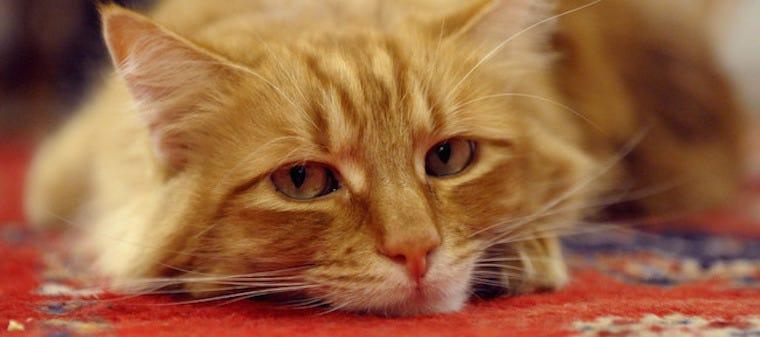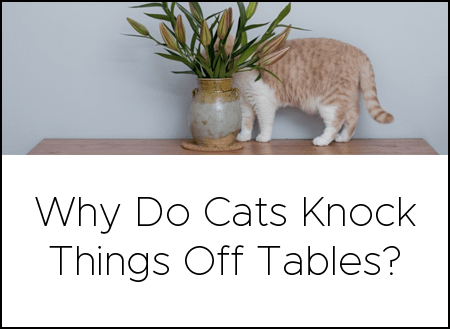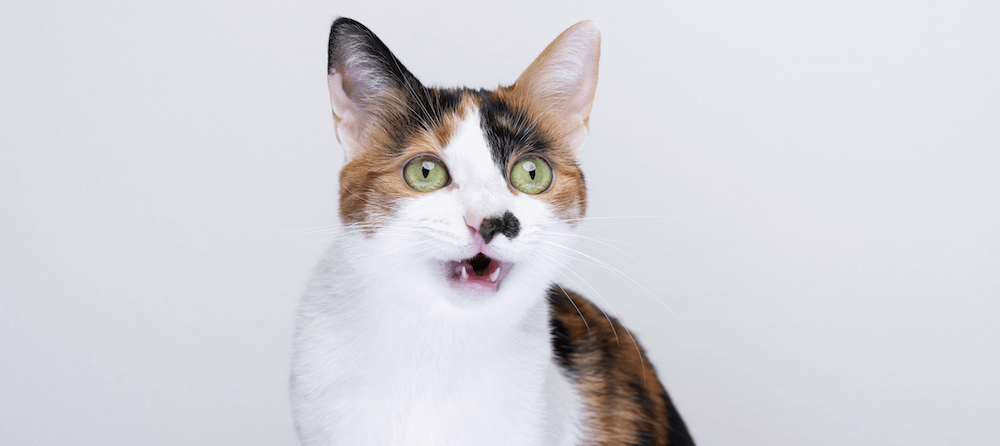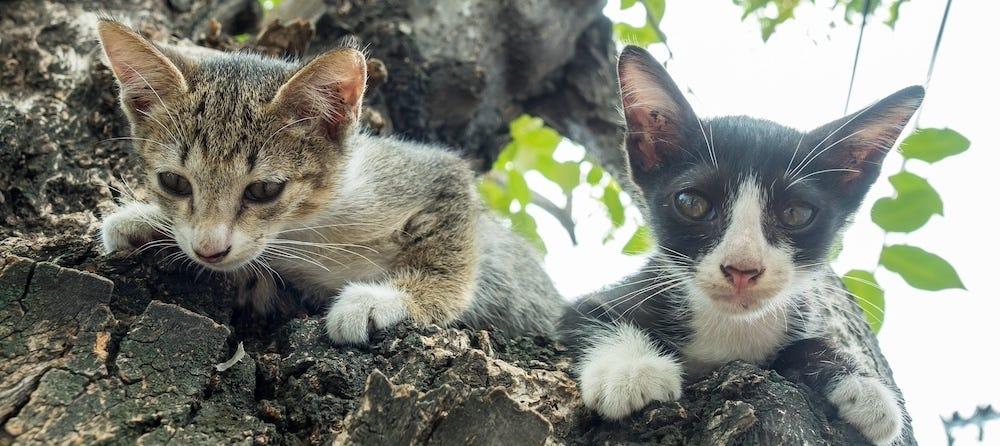While checking your cat’s litter box for feces may not top your list of priorities, it’s so important. If you notice that your cat hasn’t defecated in the litter box for a few days, get to a veterinarian! That’s because cat constipation can be an uncomfortable, chronic problem in felines.
While constipation isn’t normal, it can be seen in cats… especially middle-aged to geriatric cats (around 8+ years of age). Constipation can occur with certain medical situations such as:
- Dehydration
- Congenital problems (e.g., inherited)
- Strictures
- Pelvis abnormalities from previous trauma (e.g., fractures)
- Problems with nerve innervation to the colon or perineal region
Untreated, cat constipation can result in abnormal enlargement of the colon (called megacolon), which can be chronically difficult—and costly—to manage. That’s why the sooner we diagnose it, the sooner we can medically manage it and treat it.
So, what are the signs of cat constipation?
Signs of constipation include:
- Having fecal accidents outside of the box
- Making multiple trips to the litter box
- Taking longer periods of time in the litter box
- Excessive dried feces in the box or around the litter box
- Crying while defecating
- Straining in the litter box
- Vomiting
- Not eating
- Dehydration
How do you diagnose constipation?
The diagnosis of cat constipation is typically based on historical findings and physical examination findings (e.g., where your veterinarian may palpate large amounts of feces in the colon or back of the abdomen). X-rays are necessary to document the severity of constipation; this is important so your veterinarian can see how much feces is in the colon, how dilated the colon is, to look at the bones of the pelvis (to make sure there aren’t any old fractures or injuries causing a decreased diameter for feces exiting the body), etc. I always recommend doing blood work and a urine test too, as certain medical problems can result in constipation. This is to evaluate the kidneys, liver, electrolyte balance, white and red blood cells, protein levels, and urine concentration ability.
How do you treat constipation in cats?
If your cat was just diagnosed with constipation, you should seek treatment sooner than later. Treatment for cat constipation typically includes the following:
Ruling out underlying metabolic problems that could cause dehydration
Again, blood work is important to make sure underlying kidney failure, hyperthyroidism, or even diabetes mellitus aren’t causing chronic dehydration in your cat. With these diseases, water balance is very fragile and can result in constipation. These diseases can be treated and managed by your veterinarian.
Fluid therapy
If your cat is constipated, fluids (either under the skin or intravenous) can help hydrate your cat, increasing water to the colon.
Dietary changes
Certain prescription high-fiber or “low residue” diets can help as a bulking agent in the colon.
Laxatives
There are several types of laxatives that can be safely given to your cat (if your cat will eat it!). Oral psyllium products (e.g., Metamucil®, 1-4 teaspoons per meal) can be mixed into canned food, although not all cats will eat this mixed in their food. Another option is the laxative MiraLAX® (polyethylene glycol); this can be given at ¼ teaspoon every 12 hours as a starting point, but can be increased based on guidance from your veterinarian.
Enemas
Never give an over-the-counter enema to your cat without consulting your veterinarian. That’s because one Fleet® enema can kill a cat or result in severe calcium, phosphorous, and salt balance problems. (In fact, I never recommend going anywhere near your cat’s rectum or colon—leave that to your veterinarian!) Often in the emergency room, I will administer several enemas (made up of large amounts of warm water, sterile lubrication, and lactulose) to help remove the feces safely from your cat.
Deobstipation
With severe cases of constipation, your cat may need to be sedated at your veterinarian to have feces manually removed from the colon (this is a procedure that should ONLY be done by veterinarians). I rarely do this, as I find success with enemas and fluid therapy.
Prescription medications
There are drugs that help with “promotility” and contraction of the intestines, or even by increasing the water content in the colon. These include drugs like cisapride or lactulose. Cisapride is often dosed at 2.5 to 5 mg tablets (per cat) every 8-12 hours with veterinary guidance. Lactulose is a sticky liquid medication that is typically dosed at 1-3 mls orally every 8-12 hours as needed until the feces is softer. I always want cat owners to have lactulose available to use as needed so they can start it as soon as they notice any clinical signs.
Surgery
Rarely, surgery is required to help treat megacolon. This should only be considered if medical management has completely failed, as it is very invasive.
Euthanasia
Even though this is not an option I often recommend, dealing with severe megacolon or constipation can be chronically uncomfortable for your cat and intensive for cat owners. In some situations, euthanasia is a consideration with unmanageable cases.
Dealing with chronic cat constipation can be very frustrating for pet owners. Please know that it’s chronic, but can potentially respond well to the medical management above. When in doubt, talk to your veterinarian about this.
Lastly, as your cat ages, make sure to keep your cat’s litter box clean—the cleaner it is, the healthier it is for your cat. If your cat’s litter box is very dirty, your cat is less likely to use the box, potentially worsening the constipation. Make sure to monitor your cat and his or her litter box habits. That’s one of the reasons why I love the Litter-Robot 3 Connect, as I can check my smartphone to see how frequently my cat is using the box! It’s a dirty job, but so important for your cat’s health.
Recommendations









